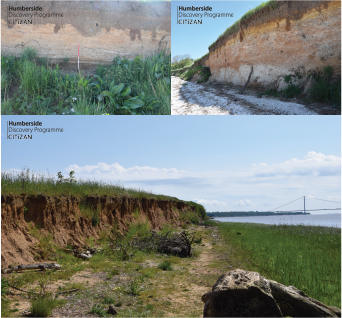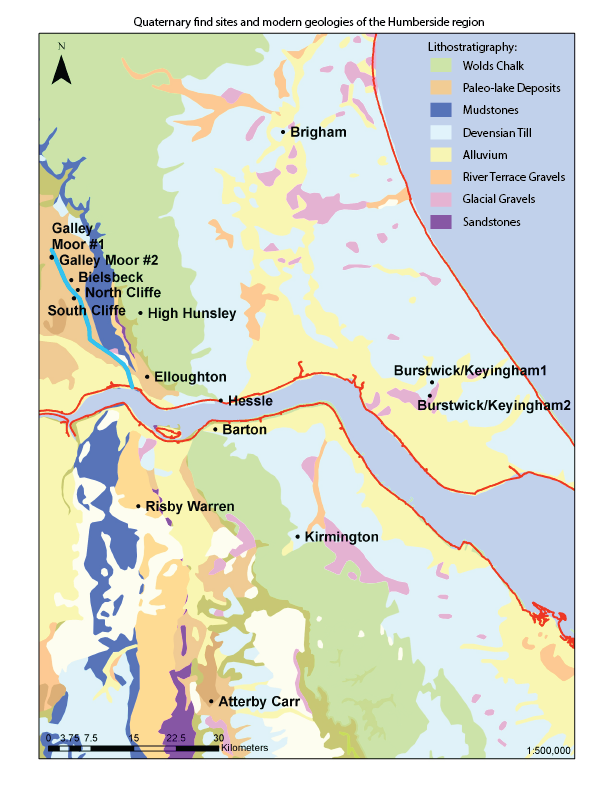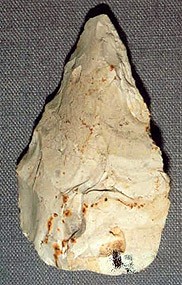The Humber's Deep Past
17/01/2020 | S Griffiths
Many will know that the Humber Estuary is not currently, and has never been, a constant in the landscape. But how far can we stretch the origins of a river between what is now East Yorkshire and North and North East Lincolnshire? What did it look like over the years before and after the river was in place? And when and which humans travelled, lived and died within the region in it’s deeper past? These questions and the ideas below where a small part of the North Sea Shelf to Celtic Edge conference, attended by Sam in Utrecht, which has led to this blog.
Quaternary Humberside
The quaternary, a geological period starting some 2.5 million years ago to the present day, is a complex episode of changing earth systems; including climate, geology and influences from other objects in the solar system (e.g. the sun). These have all had an effect on the landscapes we see today, within both the East Riding and Lincolnshire, for example the large but rapidly eroding cliffs of boulder clays and outwash gravels at North and South Ferriby represent a terminal moraine from the Last Glacial Maximum (LGM; seen in Figure 1). During the earlier part of the Quaternary this landscape was very different however and these cliffs and large portions of the Humberside landscape didn’t exist as we see it today.

There is little evidence for the proto-Ouse or other early river systems north of the Humber (e.g. the Hull, Derwent, Swale, Wharf etc.). A significant series of findings does suggest a smaller river system which deposits now underlie the Foulness Valley (see map below). These deposits and the animal remains from within them including Mammuthus primigenius (mammoth), Stephanorhinus sp. (rhino) and Bison priscus (bison) among others, suggest a warm, interglacial, open landscape at this time, approximately 250’000 – 200’000 years ago.

Modern Humberside with British Geological Survey lithostrigraphic mapping. Site represent Quaternary find locations within the area.
On the other side of the Wolds, from deposits dating to slightly later (about 125’000 years ago) a different collection of animal remains have been reported from sites at Hessle, Sewerby and Tattershall. Including Hippo and Elephant, the remains show us two things about this period of the regions prehistory. First it was very warm and stable providing ideal conditions for mammals we now associate with central and southern Africa. Second, the remains from Yorkshire where found in or close to deposits of old beaches showing that the coastline of that period was up to the base of the modern Wolds escarpment. This was a very different scenario to what we now call eastern Britain.
From the North Sea Shelf to the Celtic Edge (NSCE)
In November (2019) the Humberside Discovery Programme (SG) attended and presented at this conference discussing just this, as well as later Devensian and Holocene landscapes of the North Sea area. Papers and discussions included how, as a discipline, we look to investigate the prehistoric landscapes of the North Sea and Le Manche regions with ever-increasing exploitation of offshore aggregates and more and more commissioned infrastructure projects (e.g. large wind farm developments). Needless to say this is an important time for understanding our offshore and intertidal heritage that remain under threat from all angles. The facilitation and application of citizen science, like the CITiZAN project and similar in the Neatherlands, is a big part of this.

Presentations at the conference in Utrecht attended by the author in November 2019.
A Changing World
Returning to onshore evidence, after species like the Hippo went extinct in Britain, not long after 125’000 ago, a new guild of cooler adapted flora and fauna began to dominate the Humberside area. This is a period we know as the Devensian, from about 100’000 – 11000 years ago and including the Last Glacial period. During this long period climate was heavily unstable in northern Europe (as we know it know) and alongside more common animals like horse and early species of cow, that are the descendants of our cattle today, there are large mammoth species, giant deer and herds of reindeer across the region; and at times as far south as southern France and northern Spain. During this period the ice sheets of northern Europe waxed and waned across the Humerbside area, largely destroying any evidence for previous landscapes and animals, including humans.
The First Humbersiders
The first humans to live in the Humberside area where not our own species! The word human refers to the genus of our own species, Homo sapiens commonly referred to as “modern humans” (and even more precisely “anatomically modern human” but that’s for another day). The genus being Homo grouped in the evolutionary family tree of Hominidae. We therefore refer to other species of human more commonly as “early humans” or Hominins of which there are many, far-reaching and diverse examples from as early as 3 million years ago. For us here on Humberside two are most important at this point, Homo heidelbergensis and Homo neanderthalensis (the Neanderthals).
The earliest known archaeological examples in this region, although controversially identified, are stone tools from another old beach found in a gravel quarry in Kirmington (see map). These tools could date to as early as 425’000 years ago and once have belonged to a group of Homo Heidelbergensis individuals living within the Humber area, close to or on the coastline. These groups are likely to have been exploiting the intertidal resources in the now infilled fjord like landscape that underlies the modern ground from Kirmington to the coast at Immingham.

Handaxe found close to High Hunsley/Hotham Carr (see map)
Other sites of stone tool artefacts have also been reported at Burstwick/Keyringham and stray handaxes like those in Figure 3 (i.e. surface finds with no provenance) have been found as far north as Huntow, close to Flamborough Head, in the region. Handaxes have been found extensively in the River Trent Valley but throughout this period the Trent flowed not into the Humber but instead into what we know as the Witham Valley through modern Lincoln and down to the Wash. However, the relative abundance of handaxes and other finds of this period in the modern Witham valley and its tributaries suggests humans where living very close to modern Humberside if not always directly in it.
Finds from the Devensian (see above for definition) are rare and far between too. This is also typical across Britain with the near-by site of Cresswell Crags, on the Nottinghamshire/Derbyshire border being one of the best examples of northern Neanderthal archaeology from Europe. Recent investigations however, after dredged finds and remains from across the North Sea, are beginning to show more details of Neanderthals living across the then dry North Sea Basin, better known as Doggerland. New survey techniques have been applied to the seabed by the Lost Frontiers Project, who presented at the NSCE conference as well as CITiZAN, to show the landscapes and habitats that would have existed in the past for humans. Hopefully these discoveries will feature in future blogs
If you’d like to learn more visit...
Yorkshire Archaeological and Historical Society








